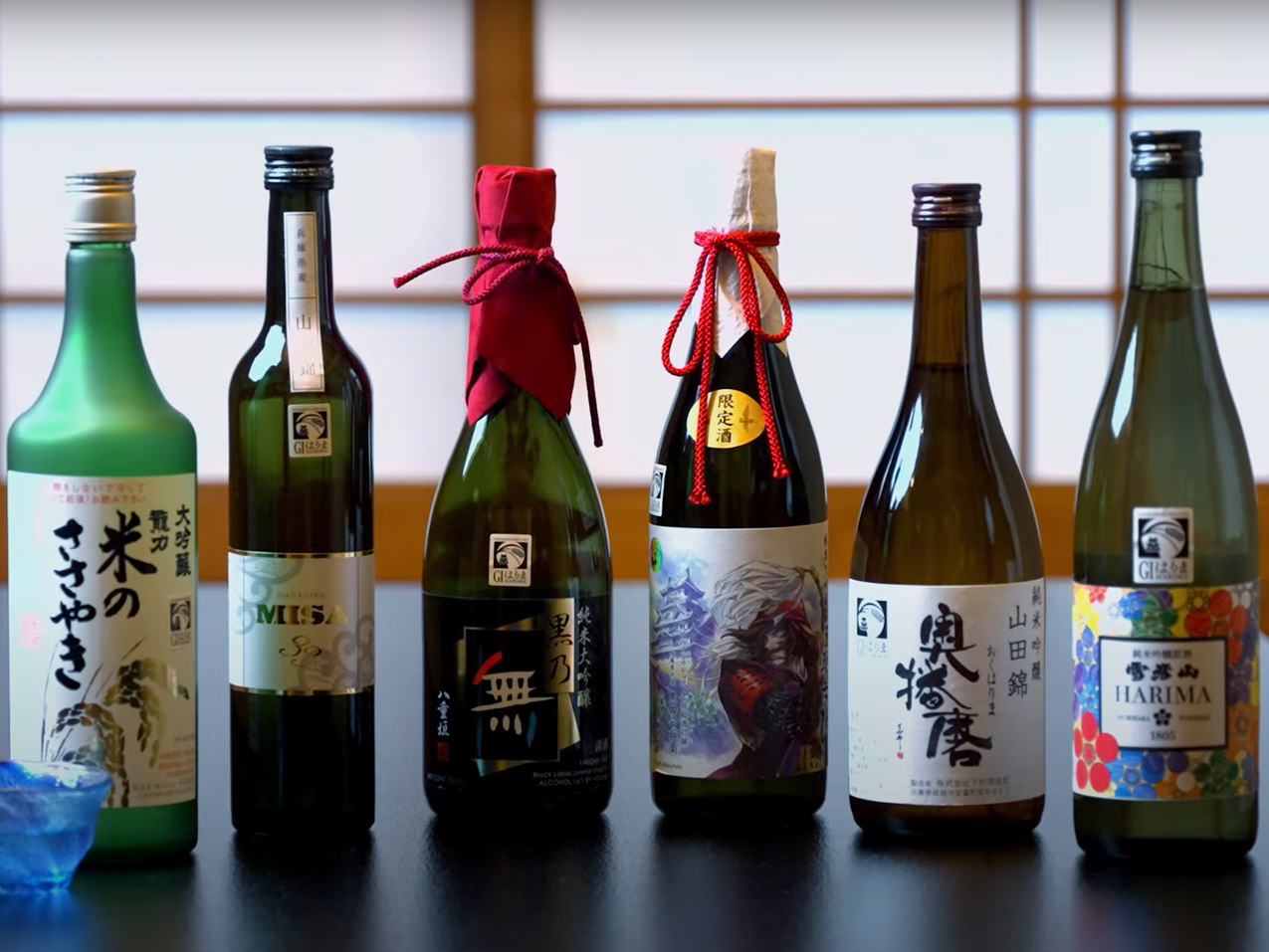Local Sake
The Harima region, including Himeji City, is said to be the “home of sake” because a passage in the “Harimakuni Fudoki” compiled in the Nara Period (1300 years ago) states that the sake brewing method can be found in Harima. Yamada-Nishiki harvested in the Banshu Plain accounts for 80% of the nation’s production, and the city is blessed with delicious water and sake rice, providing an environment conducive to the production of good sake. There are eight sake breweries in the city, producing unique sake.


Tanaka Brewery
Main Brands: Shirasagi-no-shiro, Meitou Masamune
A sake brewery that continues to take on the challenge of advanced rice polishing technology. The traditional “Ishigake-shiki Tenbin Shibori” (stone pressing), in which new sake is pressed with the weight of a stone weighing 500 kg, is known locally as a year-end tradition. Under the slogan of “Innovation from the past,” the brewery continues to pass on the tradition of sake brewing to the next generation, while at the same time taking on the challenge of new techniques. The main brand “Shirasagi-no-jo” has won gold medals at the National New Sake Competition a total of 17 times in the past quarter of a century.
Honda Shoten
Main Brands: Taturiki, Kome-no-sasayaki
As a pioneer in mastering Yamada-Nishiki, we are proposing new ways of drinking Daiginjo-shu. “Taturiki” is a famous sake representing the Banshu region. Junmai Daiginjo Akitsu is described as the Romaneconti of sake. In recent years, the company has also devoted itself to Ryuriki Terroir, working hard to cultivate the highest quality Yamada Nishiki. Brewery tours are available by reservation (February to early March) / Direct sales shop available.
Nadagiku Shuzo
Main Brands: Nadagiku
The brewery is led by the prefecture’s first female toji, and features a wide range of small-batch sake brewing. The brewery is located on a 3,000 tsubo site, where a group of sake breweries that have remained since the establishment of the company are still located, The restaurant, which uses the sake cellars, serves its own sake and seasonal homemade dishes. You can also enjoy sake brewery tours and shopping.
Tsubosaka Shuzo
Main Brands: Seppikosan
The secret to the deep and gentle flavor is the temperature that brings out the power of the koji. Under the motto of “making sake that can be understood in the Banshu dialect,” the sake brewed by taking advantage of the local climate and ingredients of the town of Yumezaki is It has a strong, gentle taste that is typical of Japanese sake, with little acidity. The “unfiltered sake” is one of the most popular products, and many fans look forward to it every year. The company also offers fragrant junmai sake brewed with natural yeast extracted from nadeshiko flowers, as well as other sake with a rich aroma, The brewery also specializes in sake brewing with ideas typical of young brewers, such as the development of a yuzu liqueur made with natural yeast extracted from nadeshiko flowers.
Yaegaki Shuzo
Main Brands: Yaegaki, MU
Daiginjo recognized overseas. Tradition is brought to the banquet table with a new sensibility. Yaegaki Shuzo boasts 350 years of history, dating back to the days of the Hayashida clan in Harima Province. The brewery has been making sake with sincerity and respect for the tradition of the “Covered Koji method”. Currently, they are building a factory in Los Angeles to manufacture and sell their products.
Meijo Shuzo
Main Brands: Meijou-kakushi-sake, Kanbei
It features a “four-season brewery” where sake can be brewed throughout the year. While the brewery is equipped with state-of-the-art facilities, key processes such as koji making for daiginjo are done not by machine but by the traditional “box koji making” method, which is based on the toji’s experience and intuition. Meijo Kakushi-sake, an unfiltered, unpasteurized sake that is not distributed to general retailers, is very popular.
Shimomura ShuzoTen
Main Brands: Okuharima
Only junmai sake is handled. The taste is rich, heavy, and luxurious. True to the family motto, “There is no superior technique in making sake by hand,” the brewery delights sake fans with its meticulous attention to detail. The sake is made without filtration to bring out the flavor of the rice, which is a sign of the brewery’s dedication to its craft. The brewer’s dedication to the essence of sake can be felt in his brewing.
Kanzaki Shuzo
Main Brands: Ryuo-no-mai, Manaino-Tsuru
“Manaino-Tsuru,” which is inspired by the image of a heavenly maiden descending to “Manai,” which means a spring of boiling clean water, It has a clean and refreshing taste. The “Ryuo-no-mai” was created in the Heisei era and is dedicated to a festival in the Harima area to pray for a good harvest. It is named after a dance dedicated to a festival in the Harima area to pray for a good harvest.
GI Harima
The Harima region of 22 cities and towns, including Himeji City, is blessed with a climate that nurtures Yamada-Nishiki, the best rice for sake brewing in Japan, and has been designated “GI Harima The area has been designated as a “GI Harima” (Geographical Indication of Sake). Fifty-two brands of sake that have passed the strict criteria have been designated “GI Harima”. The sake is characterized by its soft and gentle roundness on the palate, delicate richness, and rich aroma. We hope you will enjoy the sake made from Yamada-Nishiki, the king of sake rice.
